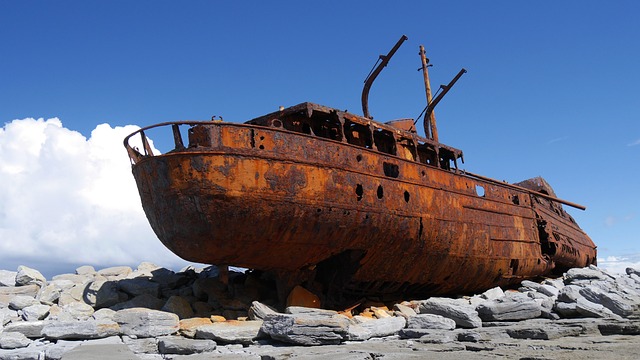【Archaeology】An Annotated WWII Underwater Archaeology Bibliography
With four decades of WWII underwater archaeology publications, the time is nigh to create a comprehensive bibliography and conduct an analysis of tren... [more]
With four decades of WWII underwater archaeology publications, the time is nigh to create a comprehensive bibliography and conduct an analysis of tren... [more]
The majority of Boston's residents are minorities. These minority residents confront the ongoing effects of racism, including the hard histories of e... [more]
The condition of a wooden shipwreck varies considerably according to the nature of the site environment. Each marine site exhibits a unique biodeteriogenic potential influenced by prevailing hydrographic factors. The potential rate of degradation of organ
Very few early Chinese shipwrecks have been discovered in Southeast Asia, despite the enormous volume of trade with China. This article describes the surprising hull features of one such wreck, and its diverse ceramic cargo. The Bakau Wreck dates to the e

Analysis of paint residues and paint equipment from North European shipwrecks together with archival research provides evidence of pigments and colours used. The limitations of pictorial sources and contemporary models is contrasted.
Although Monte Alban I in the Valley of Oaxaca (500-100 B.C.) is widely recognized as a period of major political change, researchers have found it difficult to establish whether the key institutions of the Zapotec state emerged during this or the succeed
The paper examines the limits of efficient foot transport of utilitarian goods and food in the pre-Hispanic American Southwest, basing this assessment on field studies of long-distance pottage, both domestic and commercial, in the roadless hills of modern
Skeletal profiles of medium-sized prey (> 40 kg) are often used by archaeologists as one line of evidence to infer prehistoric body-part transport patterns. However, recent theoretical and ethnoarchaeological research is divided over the types of bone ass
The archaeological identification of individuals has been an important component of both processual attempts to characterize social organization by the treatment of individuals in mortuary ritual and more recent agency theory applications to studies of po

I look at the process and speed of innovation spread, examining the economic aspects from the perspective of those who adopt the innovation. Defining innovation adoption as art investment which requires initial cost and risks, I argue that at the time of
The Later- and Middle Stone Age levels at Blombos Cave (BBC) were excavated over four field seasons between 1992 and 1999. Here we report on the results from the Middle Stone Age (MSA) levels. The taphonomy and depositional history of the MSA levels is co
A well-preserved ninth-century AD shipwreck was excavated in 1998-9 off the Indonesian island of Belitung between Sumatra and Borneo. The principal features of the wreck include planks joined by stitching with wadding inside and outside the hull, a sharp
The visual primacy of rock-art imagery can sometimes blind researchers to equally important but less obvious, non-visual aspects of rock art. Recent work from southern Africa indicates that certain San rock engravings were hammered, rubbed, cut and flaked
A Roman shipwreck at Plemmirio, near Syracuse in south-east Sicily, held a cargo of cylindrical amphoras from Africa Proconsularis (modern Tunisia). The pottery indicates a wreck date at the time of the emperor Septimius Severus (AD 193-211), and suggests

Transportation of over 160,000 convicts during the period 1788-1868 provided unfree labour for both government and private projects. Prisoners involved in the latter were known as 'assigned servants' and carried out a variety of work for their 'masters
This paper briefly examines two types of slavery in the first millennium Aegean, Carpatho-Balkan and Pontic regions--branded silver-mine slaves and blinded milk-processing slaves. The first is examined primarily in quantitative terms, to attach economical
In the figurative art of Late Bronze Age Knossos one recognizes a singular form to the human body which cuts across all other distinctions. Contrary to popular and academic interpretations, sexed differences ar not marked in a clearly binary fashion. Draw